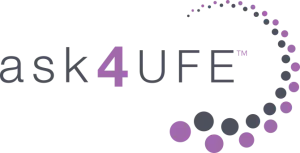Minimally invasive uterine fibroid embolization (UFE) is a safe and effective treatment option for women with symptomatic uterine fibroids. In addition to avoiding surgery, UFE offers benefits that include low rates of serious complications, a faster recovery, an approximate 90% symptom improvement rate—and you get to keep your uterus.1
A drawback associated with UFE is cramping that patients reportedly experience within the first 24 hours after the procedure that often requires pain medication for relief.2 To help women be as comfortable as possible post-UFE, different pain management regimens have been designed.
But what if something as simple as choosing a specific type of embolic for UFE could make a substantial difference? Researchers at Saiseikai Shiga Hospital in Japan compared two embolics: Embosphere® Microspheres and gelatin sponge particles.3 They found that patients who underwent UFE with Embosphere Microspheres experienced significantly less post-procedural pain.
To understand why these results are so significant, we first need to understand the UFE procedure and what an embolic actually is. Under conscious sedation, a doctor called an interventional radiologist makes a nick in the wrist or groin area to gain access to the uterine arteries that supply fibroids with blood. A slim tube called a catheter is inserted and guided to these arteries. Once the catheter reaches the uterine arteries, tiny particles called embolic are released that then block blood flow to the fibroids. Deprived of blood, fibroids shrink over time and die, relieving women of fibroid-related symptoms, such as heavy menstrual bleeding and pelvic pain and pressure.
Although the UFE procedure is effective, the way it treats fibroids can also be a source of pain. To tackle this clinical problem from a different angle, Dr. Tetsuya Katsumori and a team of researchers decided to study how using different embolic material affected post-UFE pain in 101 patfients over a span of approximately eight years.3 Overall, 52 patients underwent UFE with Embosphere Microspheres and 49 patients were treated with gelatin sponge particles. Post-UFE pain was measured using a Visual Analog Scale where patients were able to choose a number that reflected the intensity of their pain. Dosages of pain and conscious sedation medications were also recorded.
Findings showed that not only were pain scores significantly lower among patients treated with Embosphere Microspheres within the first 24 hours, but hospitalization time was shorter and lower doses of pain and conscious sedation medications were required.3
Why did the patients treated with Embosphere Microspheres[ask_translation] experience less discomfort? The researchers noted that pain directly after UFE may be linked with blood restriction to normal uterine tissue. Uniform in size hydrophilic and spherical [ask_translation]Embosphere Microspheres better target the arteries that supply blood to the fibroids while still preventing severe blood restriction to normal uterine tissue.3 Gelatin sponge particles don’t have these same advantages. Given these outcomes, Katsumori and his team considered this information useful when selecting an embolic for UFE.
This advancement in UFE can aid doctors when choosing an embolic to use and—more importantly—can help women make informed decisions about their care. Because when it comes to fibroid treatment, the only place to be is in the know.
REFERENCES
1. Silberzweig, J. E., Powell, D. K., Matsumoto, A. H., et al. (2016). Management of uterine fibroids: a focus on uterine-sparing interventional techniques. Radiology, Sep;280(3):675-692.
2. Kim, H. S., Czuczman, G. J., Nicholson, W. K., et al. (2008). Pain levels within 24 hours after UFE: A comparison of morphine and fentanyl patient-controlled analgesia. Cardiovasc Intervent Radiol, Nov-Dec;31(6):1100-1107.
3. Katsumori, T., Arima, H., Asai S., et al. (2017). Comparison of pain within 24 h after uterine artery embolization with tris-acryl gelatin microspheres versus gelatin sponge particles for leiomyoma. Cardiovasc Intervent Radiol, Nov;40(11):1687-1693.







